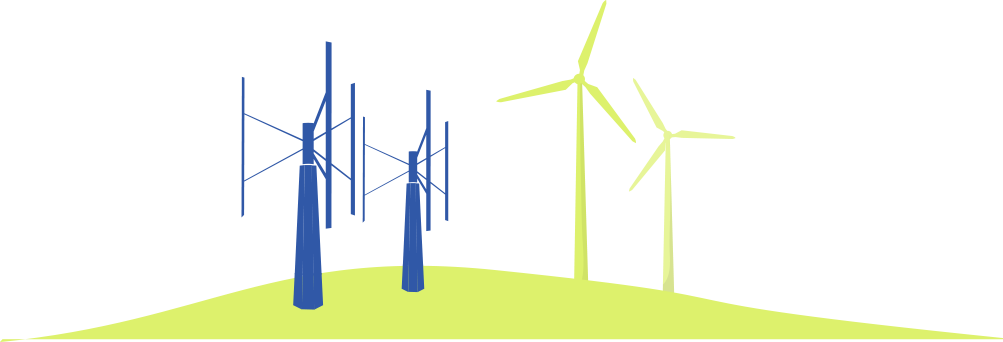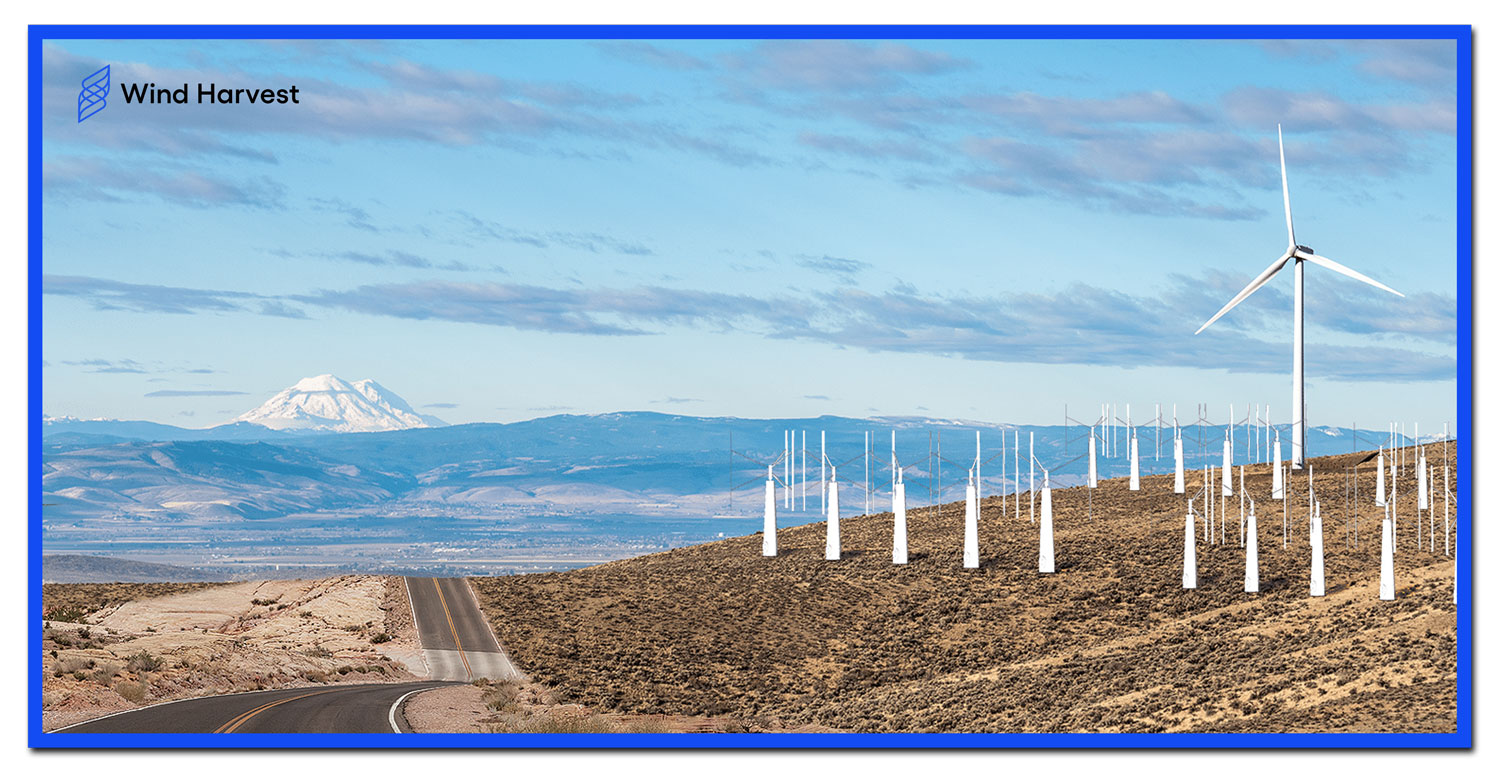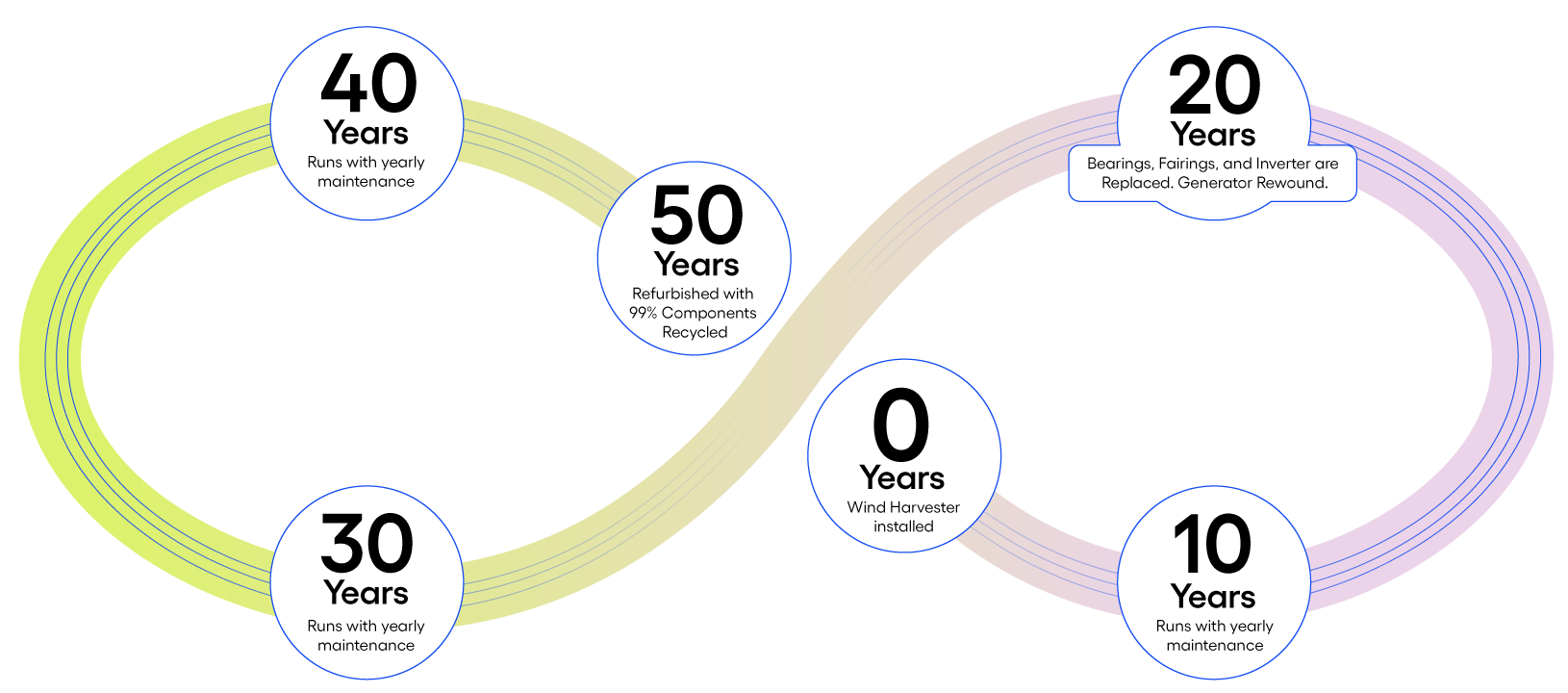
We owe it to ourselves and future generations to do all we can to reduce climate change. The world needs a sustainability revolution to avoid more environmental devastation, and we need it now.
The good news is that transforming energy away from fossil fuels can be done quickly. By 2030 we could install two million Wind Harvester turbines into existing wind farms alone, providing electricity for ~168 million global households and preventing the production of 840 trillion pounds of CO2 each year. That is the amount of CO2 produced by a thousand large coal-fired power plants each year.
We know that adding any technology into nature can cause harm. We are committed to using science to understand, evaluate and mitigate any potential environmental impacts our products and projects cause.
Making Better Use of the Land
Wind Harvesters produce energy from the middle layers of wind (15-100 feet above the ground) that no other technology can beneficially use at this time. Their compact configuration allows for installation under propeller-type turbines in the world’s windiest locations. When existing wind farms add Wind Harvesters, new land doesn’t need to be developed, often in wild places requiring new roads, transmission lines, and more habitat loss.

Sustainable Products and Production
Long-lived, Recyclable Products
We build 99% of each Wind Harvester turbine with aircraft aluminum, steel, and concrete, all of which, when well maintained, have a usable life of over 100 years.
Every 20 years, our turbines will undergo refurbishing consisting of bearing replacement, new power converters, and a possible generator rewinding. We expect the refurbishing to cost around 15% of the initial cost. The foundation, galvanized steel rotor, aluminum blades, and well-protected “nacelle” will not need reconditioning.

Manufacturing Benefits
Our components can be made in thousands of existing facilities worldwide. We can work with vendors and suppliers near project sites to make and assemble our turbines and support local jobs and economies. This flexibility and abundance of suppliers allow Wind Harvest to scale sales at any rate the market demands rapidly.
More Friendly to Birds and Bats
Wind Harvesters are three-dimensional in shape and have slower-moving blades than propeller-type turbines. Though no one has yet evaluated H-type turbines’ impacts on birds and bats with scientific rigor, scientists hypothesize that they will be safer for wildlife.
Wind Harvest will equip its projects with high-definition motion and sound detection systems (e.g., DT Bird) that can “see” and identify flying animals, even at night from 100s of feet away. If we find that certain species don’t naturally avoid our turbines’ rotors, the system will slow our turbines down or stop them entirely until the at-risk animals have safely flown past.




